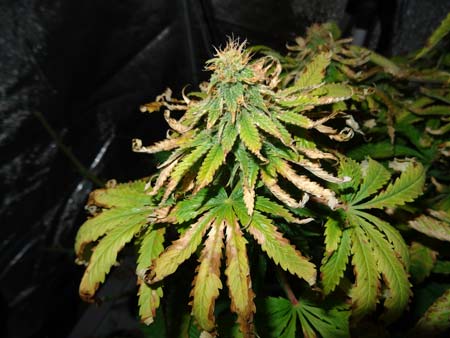Understanding the Role of Temperature in Cannabis Cultivation
Cultivating cannabis indoors is a delicate art that involves orchestrating several variables to create the perfect environment for your plants to thrive. Among these factors, temperature plays a pivotal role. As a cannabis enthusiast, it’s crucial to comprehend the intricate relationship between heat and plant health. In this blog, we will delve into the nuances of temperature control, explore the potential consequences of heat stress, and provide actionable strategies to ensure your cannabis plants remain healthy and productive throughout their lifecycle.
The Ideal Temperature Range for Cannabis Growth
Cannabis, like any other plant, has specific temperature preferences for each stage of its growth cycle. During germination, a temperature range of 70-85°F (21-29°C) is ideal. In the vegetative stage, the sweet spot is around 70-80°F (21-27°C), while flowering requires a slightly cooler range of 65-80°F (18-27°C). These temperature ranges are not set in stone and can vary slightly depending on the strain, genetics, and other environmental factors.
Maintaining the optimal temperature range is crucial for healthy growth, as deviations can hinder nutrient uptake, slow photosynthesis, and even disrupt the overall metabolic processes of your cannabis plants.
Recognizing Heat Stress in Cannabis Plants
Heat stress is a silent threat that can sneak up on your plants, leading to devastating consequences if not addressed promptly. Common signs of heat stress include leaf curling, wilting, and discoloration, particularly at the tips. These symptoms are indicative of the plant’s struggle to regulate transpiration and overall water balance.
It’s important to differentiate heat stress from other issues like nutrient deficiencies or pest infestations, as treating the wrong problem can exacerbate the situation.

Impact of High Temperatures on Photosynthesis and Respiration
Photosynthesis, the lifeblood of plant growth, is profoundly influenced by temperature. As temperatures rise, photosynthesis can become less efficient, which affects the plant’s ability to produce energy and essential nutrients. Additionally, excessive heat can lead to increased respiration rates, further taxing the plant’s energy reserves.
Understanding this delicate balance between temperature and metabolic processes is essential for maintaining optimal plant health.
Strategies to Mitigate Heat Stress
To mitigate the risk of heat stress, several strategies can be implemented:
Proper ventilation and air circulation are essential for preventing heat buildup. Installing fans, exhaust systems, and air conditioning units can help maintain a consistent temperature throughout the growing area.
Selecting heat-resistant strains or adjusting cultivation methods can also make a significant difference in managing higher temperatures.
Cooling Techniques for Indoor Cannabis Cultivation
Evaporative cooling methods, such as misting systems or strategically placed water sources, can help cool the air and reduce temperatures. Additionally, designing your grow room with heat-resistant materials and insulation can create a more stable environment for your plants.
Water-cooling systems offer another innovative approach, efficiently removing excess heat from the environment and ensuring your plants remain comfortable.
Monitoring and Managing Temperature
Utilizing temperature monitoring devices, such as thermometers and hygrometers, is essential for staying informed about your grow room’s conditions. Armed with accurate data, you can fine-tune your temperature control strategies based on your plants’ needs.
By adjusting lighting and watering schedules to correspond with temperature fluctuations, you can minimize the risk of heat stress and create a more harmonious growing environment.
Case Study: Navigating Temperature Challenges
Consider the story of Alex, an experienced cannabis grower who faced unexpected temperature spikes during a particularly hot summer. By promptly implementing cooling techniques, adjusting his cultivation methods, and carefully monitoring his plants, he managed to successfully navigate the challenging conditions and achieve a bountiful harvest.
Conclusion: Striking the Right Balance for Healthy Cannabis Growth
In the intricate dance of indoor cannabis cultivation, temperature control is a vital partner. By understanding the optimal temperature ranges for different growth stages, recognizing the signs of heat stress, and implementing effective cooling strategies, you can provide your cannabis plants with a nurturing environment for robust growth, impressive yields, and vibrant health. Remember, a little attention to temperature can go a long way in ensuring the success of your indoor cannabis garden.
